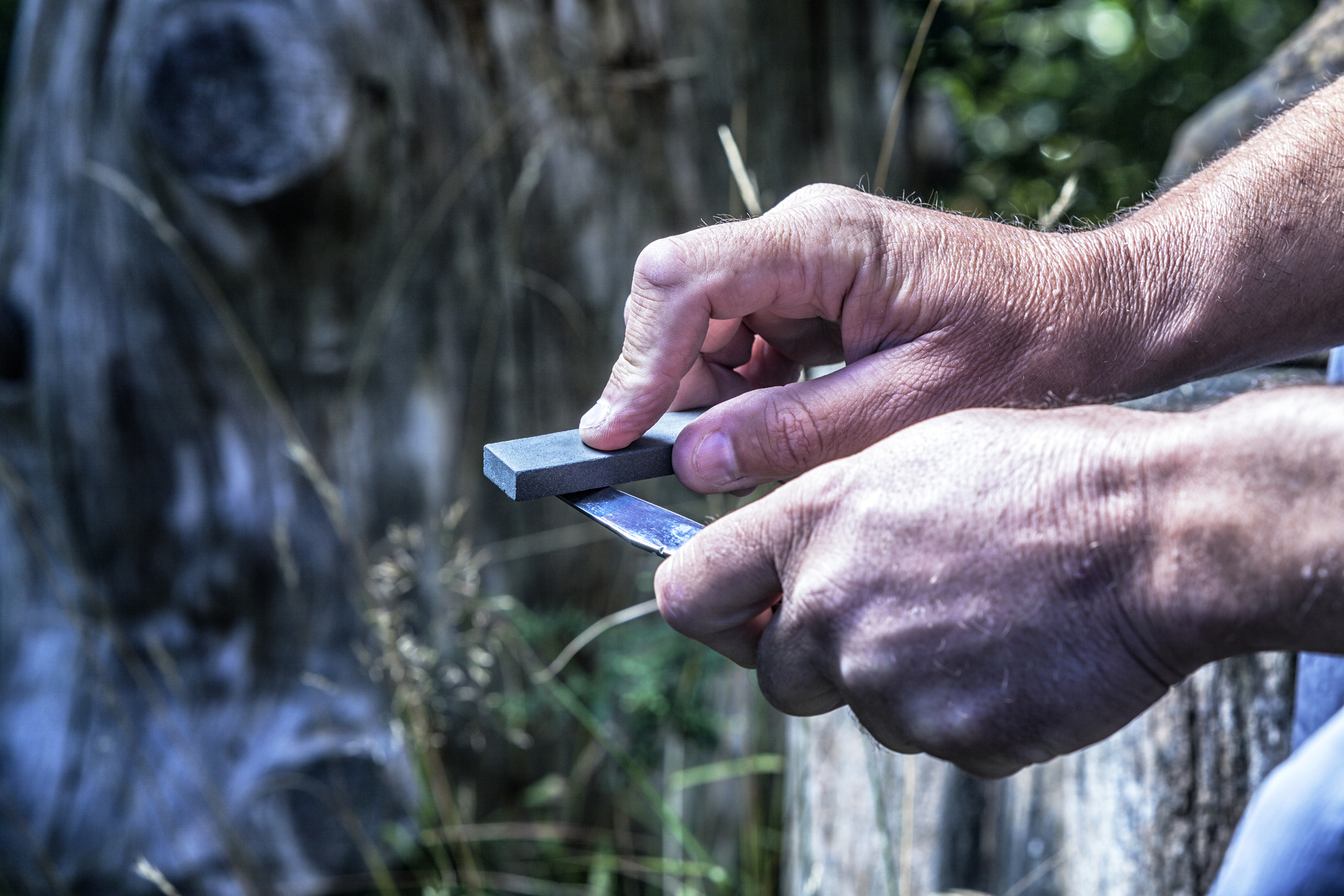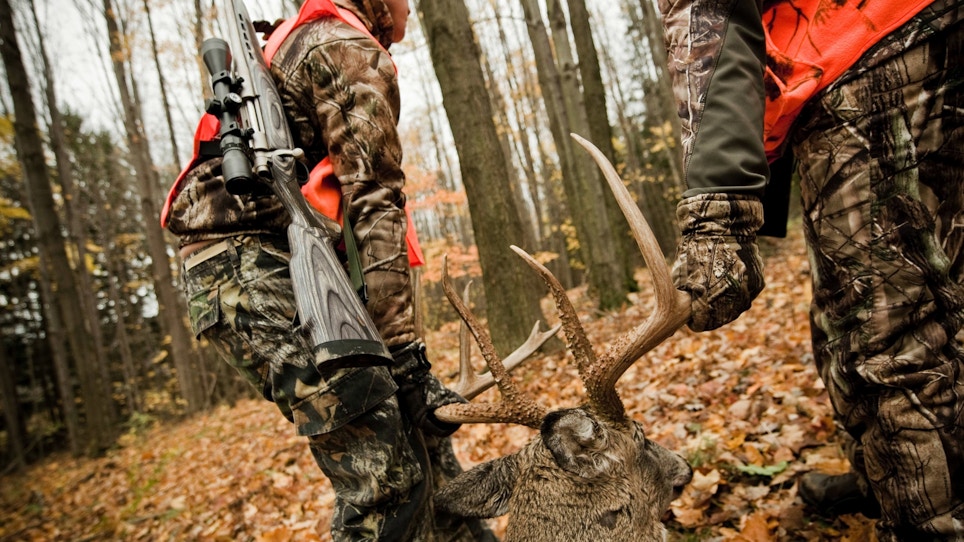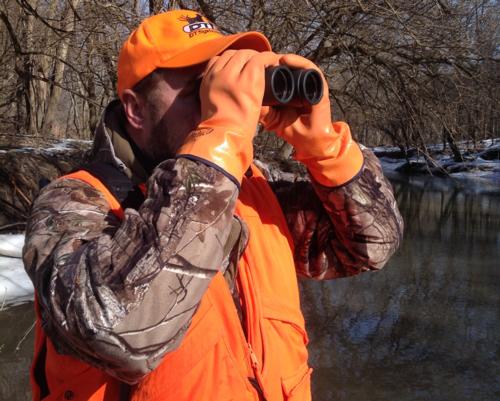 Field dressing a big game animal is a skill all hunters must possess. And while there have been countless articles, videos, and books written on the topic, it seems that the more you do it, the more you add a little tweak to the process here and there that fits your own style and needs.
Field dressing a big game animal is a skill all hunters must possess. And while there have been countless articles, videos, and books written on the topic, it seems that the more you do it, the more you add a little tweak to the process here and there that fits your own style and needs.
I’m no different. Being someone who has hunted the backcountry a lot, my own method evolved to one where I rarely field dress an animal any longer, instead opting to simply take the quarters, backstraps and neck meat off without ever unzipping the chest cavity. Still, there are times when that’s what I do, depending on the situation.
The one item you’ll ask about that’s missing from this list is game bags. While I may use mesh game bags on a backcountry hunt where I need to hang the meat for a day or two until I get it out to civilization, most of the rest of the time I use 3mm thick plastic garbage bags for the task. The reason is simple: these bags don’t leak, and they are really hard to puncture, which means water from melted ice can’t get in, either. I use these bags when I get the meat off and it goes immediately into a cooler with lots of ice.
Regardless, here are 10 items I like to have on hand when the party’s over and it’s time to do the dirty work. I say that in jest. When the Good Lord has graced me with an animal that has both given me pleasure in the hunting of it, and that will provide my family with the finest protein on the planet, I take great care to ensure that the job is done properly, with respect. Here, in no particular order, are 10 items that help me complete the task efficiently.
10) The Right Knife
If you’re like me you have oodles of different hunting knives. I have my favoritse, and choose them depending on the size of the animal. A clip- or drop-point blade design between 2 ½- and 6-inches long is ideal for most all North American big game. Longer blades tend to get out of control and contribute to user fatigue.
RELATED: Best Hunting Knives for 2017
9) Knife handles
There are some pretty knives out there, but for serious work, a non-slip handle made from a synthetic material or real bone will help you keep a sure grip even after they’ve been covered with blood.
8) Whetstone or steel
Your blade edge should require no touching up if you are simply field dressing an animal. When quartering or boning meat, it may. Carrying a small whetstone or sharpening steel makes this easy.

There's no reason your blade should be dull when it's time to field dress. Always prepare to have your knives sharp before hitting the woods. (Courtesy iStock)
7) Replaceable Blade Knives
Today, a knife with a replaceable, throw-away blade that comes scalpel-sharp and is relatively inexpensive is all the rage. This craze was started by Havalon Knives, but other companies, like Gerber, Outdoor Edge, Boker Knives, Camillus, Kershaw and Buck Knives all make this style. I’ve used several, and really like them.
6) Small saw
A lightweight pack saw is handy for cutting through the sternum during the field dressing process, as well as removing antlers from the skull when a Sawzall isn’t available.
5) Gloves
Infection is a real concern when field dressing big game animals. I once deeply cut an index finger skinning an Alaskan brown bear; it got so infected I nearly lost it. To this day, it throbs in moderate weather. To avoid such problems, always wear rubber gloves when field dressing game. Most folks like the lightweight style seen in a doctor’s office. I prefer to use inexpensive, heavy-duty, forearm-length glove, typically used for washing dishes.
4) Tarp
To keep meat as clean as possible, I always carry an old space blanket in my pack or truck. It doubles as part of my survival gear, but I also use it to lay meat on during the boning process. This helps keep it clean. A heavy-duty plastic garbage bag or the classic blue tarp works well for this, too.
3) Pre-moistened towelettes
You can find them in the baby products section of a grocery or drug store. Wet Ones — don’t leave home without ‘em.
2) Cooler
An ice chest big enough to get your meat in and hold lots of ice is a never-leave-home without it item. There’s nothing more important in caring for game meat than getting it cleaned up of all debris, viscera, and blood, then getting it iced down immediately. YETI created the category of high-end “super” ice chests, and they’re awesome. Still, there are others out there, including products from Pelican, Engel, Orca, Canyon Coolers, Siberian Cooler, K2 Coolers, Grizzly Coolers, Igloo, Icehole Coolers, Bison Cooler and Yukon.
RELATED: Trick Out Your YETI With Badger Wheels
1) Water
Sooner rather than later, you’ll need to wash all the blood, guts, bone chips, dirt, leaves and whatever off the carcass. Ideally, there’s a place close by where you can quickly bring the field-dressed animal, hang it up, and hose it down big time. On some hot-weather western hunts — pronghorn hunting comes to mind — I carry up to 20 gallons of water in the back of the truck so that once we get a goat down, I can wash it out almost immediately. Using lots of water helps speed up the cooling process, too. Side note: Growing up, I was taught to use water sparingly on an animal carcass. Today, I realize that when it comes to washing the carcass and cooling it down, more water is definitely better.
How about you? What’s your SOP when it comes to field dressing animals? Do you have any little tips on technique and/or gear you can share with us? Drop me a note at brobb@grandviewmedia.com and let me know.
Featured image: Windigo Images — John Hafner







